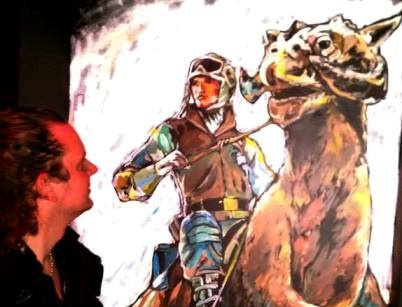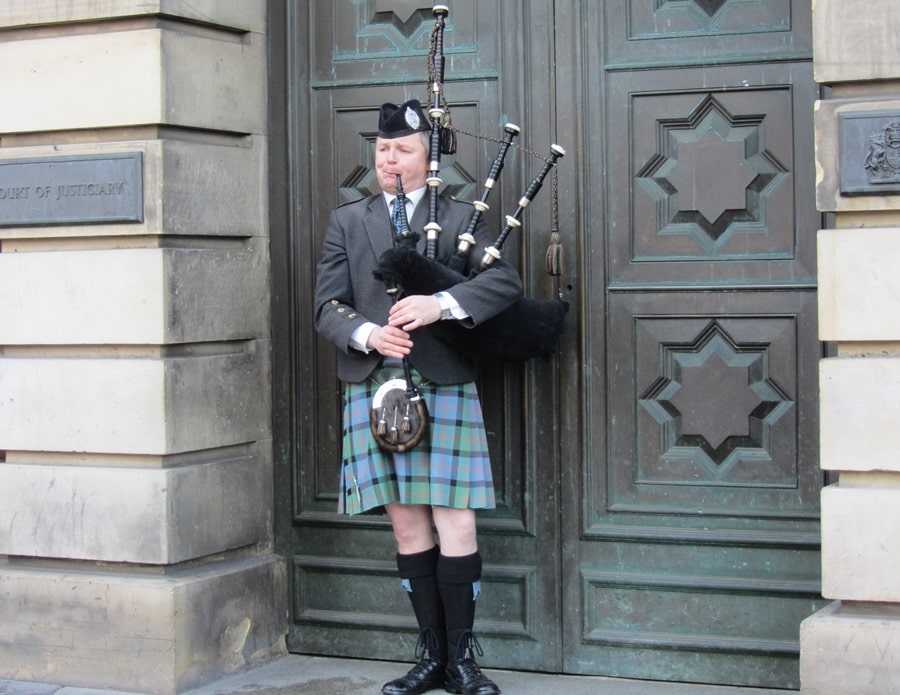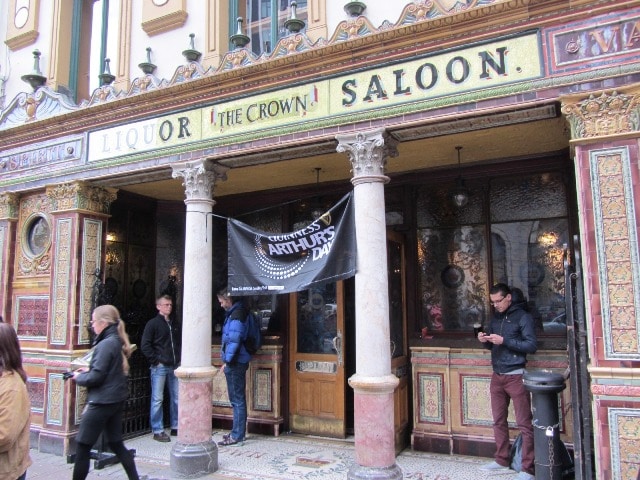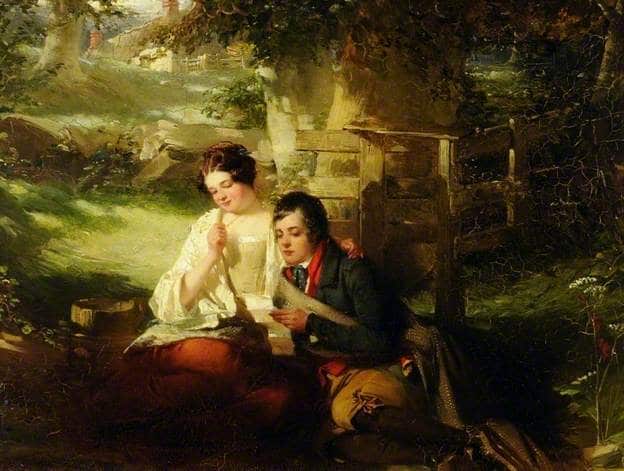Brian Walsh, Irish Visual Artist and Mural Painter
Brian Walsh is a talented mural painter. He lives in Ireland, in Kildare County and draws a range of various characters and monuments as well as amazing portraits and caricatures.
Let’s explore the world of Brian who used to be my English teacher. This really interesting interview will tell you more about art, Irish mythology and history as well as good places to visit in Ireland. Thanks to him for answering my questions! French Version.
Christelle : Hi Brian, could you introduce yourself please?
Brian : My name is Brian Walsh. I was born in Kells, County Meath, in 1975. I lived in Dublin for most of my adult life but now I live in Leixlip, in Kildare.
How long have you been painting and drawing ?
I’ve been drawing and painting more or less for my whole life. I have a Diploma in Fine Art and a Bachelor’s Degree in Production Design. I also hold a City and Guilds Certificate in Mural Painting. I’ve been selling artwork since about 1993 but have been working as a full-time mural painter for the last year.
How do you choose the subject of your painting ? What do you like painting ?
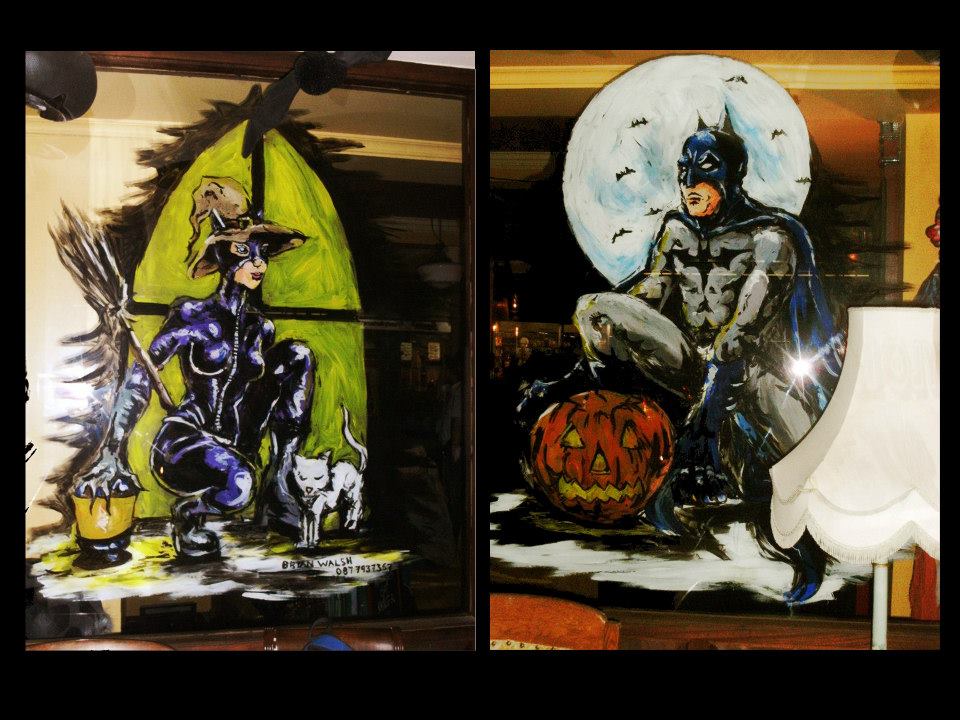
Most of what I paint these days is commissioned, so the person commissioning tends to give me a rough idea of what they want and then I develop it.
I’m not really an ‘arty’ artist these days; I used to be really into conceptual art and the like in my student days but these days find a lot of it a bit too elitist; and nowadays prefer to do things that everyone can enjoy.
I’ve read comics all my life and probably learned most of what I know from them; so I like comic-style, action scenes. There’s a pub on Westmoreland Street called Cassidy’s, whose owner has similar tastes to my own – I love being commissioned by him as it’s always interesting.
I’ve read a British comic called 2000ad almost consistently since I was about 5 years old! I used to have an ambition to draw for it but finally realised drawing actual comic strips really wasn’t for me – it’s incredibly difficult and time-consuming – give me a huge, colourful mural to paint any day!
One of your drawing includes Vikings. Could you tell us a bit about the connection between Vikings and Ireland ?
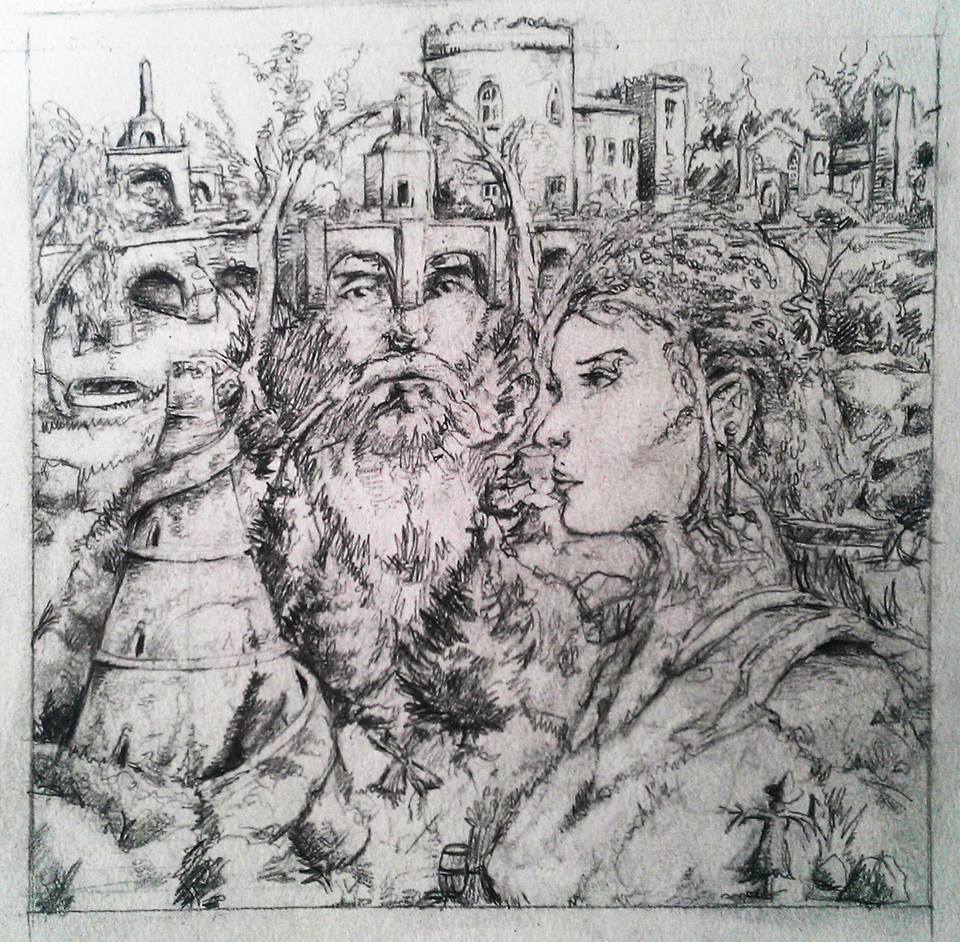
Ireland was invaded many times by Vikings between the eighth and eleventh centuries. Ireland was already Christianised by this time, and the Irish church held many treasures which were plundered by Vikings. My hometown’s most famous treasure, the Book of Kells, apparently used to have a gold cover encrusted with jewels, which was torn off and seized by the Vikings. They left the contents.
As is the case with many Irish towns, there is a tall round tower in Kells. As far as I know, these types of towers were generally built by the church to provide sanctuary from the Vikings. I suppose a lot of what we know of the Vikings in Ireland comes from the writings of Christian monks, mainly because they were among the very few literate people of the time.
One of the famous battle is the Battle of Clontarf, in 1014. Brian Boru had claimed the title of High King of Ireland, but his authority was being challenged by other Irish rulers, who employed Viking mercenaries to fight Brian’s armies. Though Brian’s forces were victorious, Brian was killed in his tent by Vikings.
And the connection about Vikings and Leixlip ?
Leixlip comes from the Norse language and means « »Salmon Leap » , which is the literal translation of Leixlip’s Irish name, ‘Léim an Bhradáin; ‘.It was an important place for the Vikings as it was the last stretch of navigable waters in the river Liffey.
There was a battle fought in Leixlip between the Viking invaders and the forces of Augaire mac Ailella, the King of Lenster (the Eastern province of Ireland containing Dublin, Kildare, Wicklow and a few other counties). It was called the Battle of Confey in 917 , and caused Dublin to be recaptured by the Vikings, who had been defeated and expelled 15 years earlier.
Your painting above depicts the city through history. What does represent the monuments behind the two characters : the castle and the tower ?
The castle has no connection with the Vikings, It was built soon afterwards (1172). It is Leixlip Castle, where the Guinness family still lives. The Castle is currently owned by the Hon. Desmond Guinness, founder of the Irish Georgian Society. It’s hard to get into, because it’s a family home! It is open on selected days.
The Tower is the Wonderful Barn. It is a corkscrew-shaped barn built in 1743 on the edge of Castletown House Estate of the Conolly family.
There are leprechauns in some of your paintings. Could you explain their meaning and their typical dress?
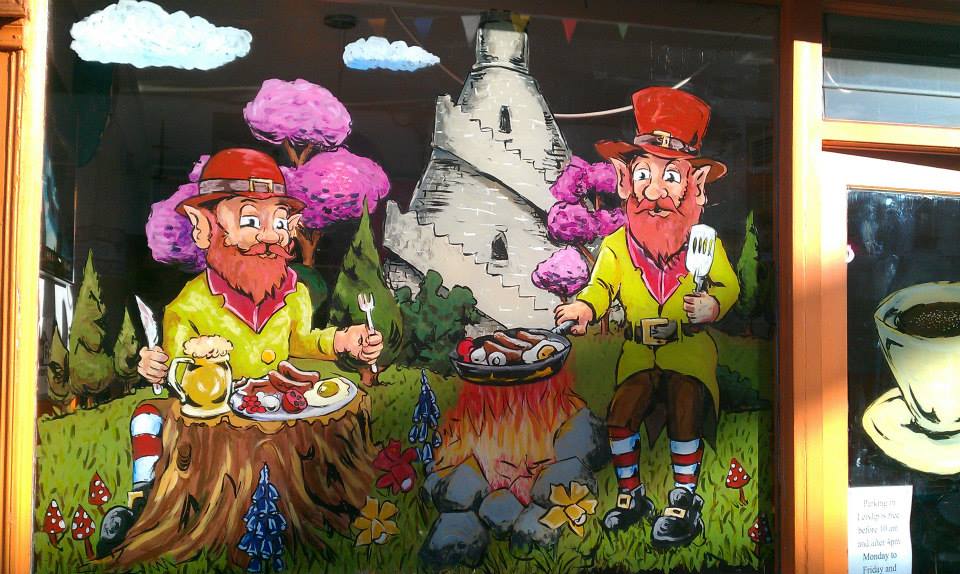
Leprechauns are a type of fairy in Irish folklore. A ‘fairy’ in Irish mythology is not the cute winged girl usually associated with the term. It’s the closest translation of the Irish word ‘sidhe’, which can refer to many mythical people, not all of them small or cute. The leprechaun, according to legend, is a type of shoemaker or cobbler and is usually depicted as being about the size of a small child
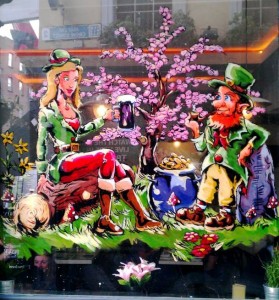
They are usually depicted as old men with pointed ears and are usually shown bearded. Their dress varies, but they are commonly shown wearing hats with buckles, knee-breeches, stockings, jackets and buckled shoes.
Leprechauns allegedly own vast amounts of gold which are stored in crocks, and placed at the end of a rainbow. There may well be female leprechauns within Irish mythology, but I have yet to come across any mention of one. If a person catches a leprechaun, it will take him or her to its crock of gold. However, they are also reputed to be mischievous and devious, and there are many stories in which the leprechaun outsmarts its captor through clever trickery.
To be honest, the leprechaun is only a small part of Irish mythology; which is full of strange mythical creatures (the Pooka, the Banshee and the Clurichaun to name a few). However, the leprechaun seems to be the most exportable, and thus has become a sort of international symbol of Ireland.
What are your favourite, and most inspirational, places in Ireland to visit?
I’ve just come back from Kerry, which is a lovely part of Ireland. It’s full of rugged mountains, greenery and sandy beaches. The Cliffs of Moher in the West are worth visiting; they’re amazing but a bit touristy for me – I prefer somewhere a bit more off the beaten track. Same goes for the Giant’s Causeway in the North; its uniqueness makes it worth seeing but again it’s a little bit too crowded with tourists for me personally.
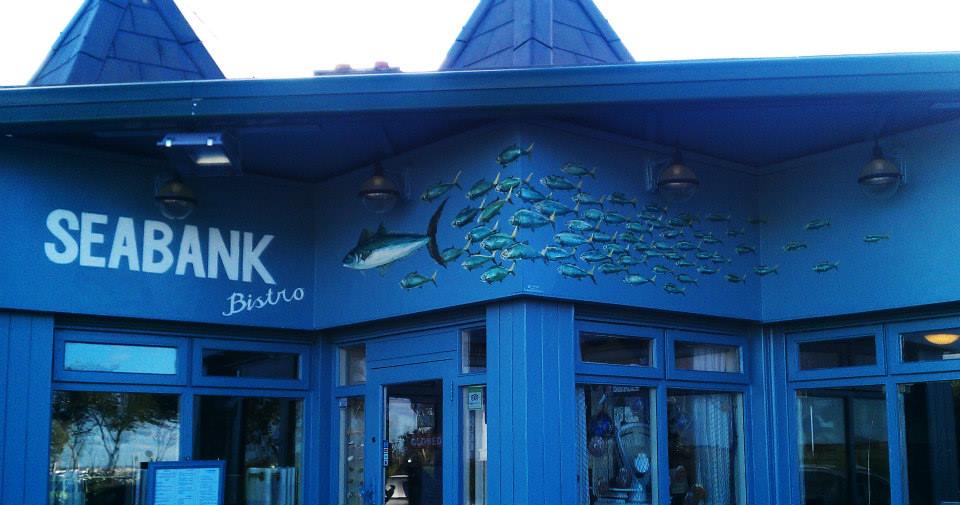
Personally I like boating; I go along the canals sometimes (there are only two but they stretch across the whole country).
I’ve also been along the Shannon, a very large stretch of navigable waterway And the lakes – the midlands counties aren’t the most famous with tourists, but if you’re into boating there are some beautiful lakes in Cavan, Westmeath and Leitrim. Boating aside, Donegal is a great spot; like Kerry it has a lot of mountains and a rugged coastline.
Galway is a good place to visit too; it’s always lively and has great nightlife – it’s also close to the Burren, an interesting limestone area with some neolithic monuments. Newgrange is a famous prehistoric burial mound – it was designed so that the sun’s light shines in during the solstices (though you have to book years in advance and probabaly be some kind of VIP to experience this phenomenon!) There are other such ancient burial mounds too; which i prefer because they haven’t been developed much and are more or less in their orginial state. The one I’m most familiar with is in Lough Crew in Oldcastle.
Every castle in Ireland was built by the Norman invaders; who came from France via Britain and integrated themselves into Irish society so successfully that it is said that they ‘became more Irish than the Irish themselves. Anyway one of the most impressive Norman castles is in Trim, County Meath. You might recognise it as one of the major locations in the film Braveheart. My own surname is Norman and, interestingly, the Normans themselves were originally descended from Vikings.
Thanks again for sharing 🙂
More about Brian :
- Website : brianwalshpictures
- Fagebook Page : brianwalshpictures


